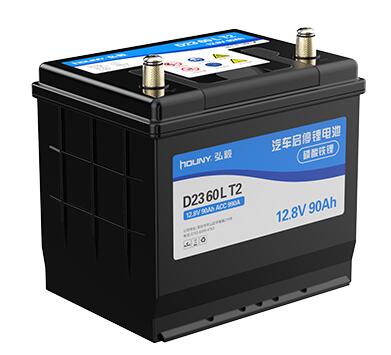The Best Stop-start Car Battery
Stop-start Technology Overview
The Stop-Start System is a low-cost method for increasing fuel economy and decreasing emissions. The system turns off the internal combustion engine when the vehicle stops at a stoplight or during stop-and-go traffific where the vehicle would normally idle for a minimum of three to fifive seconds. BBC published an article on how UK rush hour drivers spent an average of 74 hours stuck in traffific in 2017. In reality, this is the case all around the globe—experiencing heavy traffific on a daily basis. To simplify the stop-start system is where the engine shuts down but other components continue to run such as the air conditioning system, power steering, brakes, sound system, etc.
Start-stop systems have been popular in Europe since the 1980s, but have only recently been introduced to the U.S. market. Audi, BMW, Chrysler, Daimler, Fiat, Ford, General Motors, Honda, Hyundai/Kia, Jaguar, Land Rover, Mazda, Nissan, PSA Peugeot, Citroën, Renault, Toyota, Volkswagen, and Volvo now offer models with start/stop systems in the U.S. The
popularity of these systems will likely continue to increase due to pressure to comply with corporate average fuel economy (CAFE) standards that currently target an average of 54.5 mpg by 2025.

Stop-start Car Batteries
More than 70 percent of all new cars are equipped with a start-stop function. The aim of the automotive industry is to further reduce fuel consumption and, in doing so, reduce emissions. Particularly, it needs higher demands on the car battery. Therefore, more power and higher cycle stability are required. When the vehicle is stationary, the battery must provide the energy for the increased number of engine starts and the electrical loads in the car.
Drawbacks and Disadvantages of Lead-acid Batteries
Car users around the world have been using lead-acid batteries to start cars. Lead-acid batteries are commonly found in motor vehicles, battery backup systems and other electrical applications where a rechargeable battery is required. Lead-acid batteries are generally reliable for everyday use; however, these batteries do have their shortcomings. It is important to be aware of the dangers and disadvantages of lead-acid batteries before including one in your electrical circuit.
In a research made by University of Wisconsin in September 2010 on Lead Acid Battery Maintenance and Safety Protocol, they noted that there's massive dangers from chemical burns in using lead-acid batteries since the electrolyte in a typical lead-acid battery is made up of approximately 36 percent sulfuric acid and 64 percent water. Furthermore, when a lead-acid battery is recharged, some of the electrolyte may evaporate and hydrogen gas will leak from the battery cell vents. Hydrogen gas is flflammable and could be the source of a fifire
outbreak. Lead-acid Batteries are also equipped with lead oxide electrode plates immersed in an acidic electrolyte and an automotive lead-acid battery can weigh between 30 and 60 pounds thus lifting a lead-acid battery inappropriately can cause serious injury.

评论
发表评论